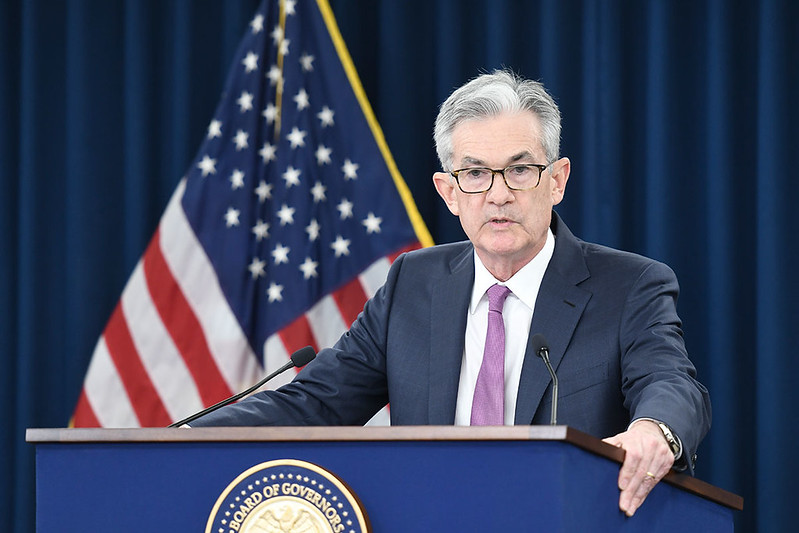
(Photo : Flickr)
US Federal Reserve chief Powell
The Federal Reserve will be in the spotlight next week, as speculation grows about the size of the central bank's upcoming interest rate cut and the pace of further reductions in the months ahead. Despite recent market volatility driven by economic concerns, the S&P 500 is currently only 1% below its July peak.
Market sentiment has been fluctuating, with traders almost evenly divided between expectations of a 25 or 50 basis point rate cut. This uncertainty highlights a key question: will the Fed take aggressive action to prevent further weakening in the labor market, or adopt a more cautious approach?
"The market wants reassurance that while growth is slowing, it's not collapsing," said Anthony Saglimbene, chief market strategist at Ameriprise Financial. Investors will be closely watching the Fed's updated economic forecasts and rate outlook, with markets currently pricing in over 100 basis points of cuts by the end of 2024. In comparison, the Fed's June projections only anticipated one 25 basis point cut for the year.
Fed needs to catch up
Walter Todd, chief investment officer at Greenwood Capital, advocates for a 50 basis point reduction, citing the gap between short-term Treasury yields and the Fed's current rate. "The Fed is behind in this cutting cycle and needs to catch up," Todd noted.
Aggressive rate cut expectations have driven a rally in Treasuries, with the 10-year yield falling by around 80 basis points since July. However, if the Fed signals less easing than markets expect, bond yields could rise, putting pressure on stock valuations, according to Mike Mullaney, director of global markets research at Boston Partners.
Mullaney also pointed out that the S&P 500's price-to-earnings ratio remains elevated compared to historical averages, warning that rising yields could limit further gains.
With inflation showing signs of moderation, attention has shifted to the labor market, where recent job growth has been weaker than expected. The unemployment rate rose to 4.2% in August, reaching levels the Fed had previously forecast for 2025.









